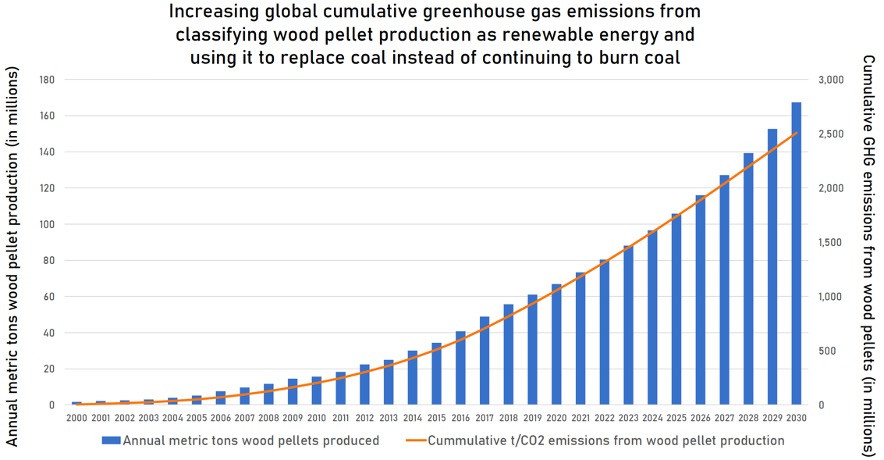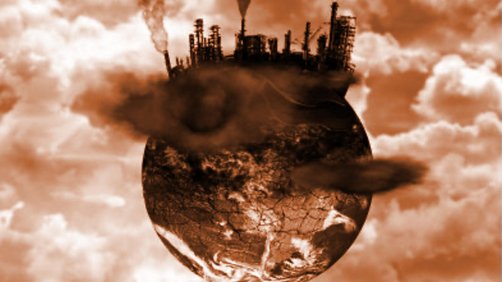Marketing “renewable” power, the timber industry has been able to raise money and scale wood pellet production faster than even industry insiders forecasted five years ago. This is because wood pellets are easy political decisions to achieve climate policy targets. Like coal, wood pellets are used to manage baseload power, and help keep jobs in the same logistics, storage, transportation, and power plant infrastructure.
The problem is that despite industry (and some policy) classification of wood pellets as carbon neutral—politically equivalent to solar and wind in greenhouse gas (GHG) emissions—wood pellet power plants perpetually emit GHG emissions. Thus, the fast-growing industry is actually increasing global emissions, relying on forecasts of future carbon sequestration from new tree growth to neutralize their current emissions.
Basically, burning wood pellets as a substitute for coal does not in fact reduce emissions. According to Drax, an electric utility that operates the world’s largest wood pellet power plants, wood pellets burned on a MWh-basis emit 12.7 percent more GHG emissions than coal. And this does not even account for the emissions from wood pellet harvest, production, and transport which require larger volumes on a tonnage-basis than coal due to wood pellets having a lower energy density than coal.
“The road to hell is paved with good intentions,” said the Speaker, about this unfortunate climate paradox. His chart is the first ever attempt to quantify the cumulative GHG emissions from the wood pellet industry. As we enter an era of Big Government and renew focus on climate policy, he wonders where else incentives are going to misaligned because of state dictact.

Source: Bioenergy Statistical Report (2019), Hawkins Wright Outlook for Wood Pellets (2020)
The coronavirus pandemic has triggered the largest ever annual fall in emissions, more than during any previous economic crisis or period of war. Global emissions are expected to fall 8 percent to 30.6 Gt in 2020, the lowest level since 2010.
When asked if this could be the year that global emissions peak, the Speaker said that he just doesn’t know. “The fact is that every year we are emitting more emissions than we did cumulatively through the beginning of time to 1950.” That’s why 19 of the 20 warmest years have occurred since 2001. There is more sensitivity to weather changes than ever before. 2019 was the fifth consecutive year in which America experienced ten or more $1 billion weather and climate disasters, including fires, hurricanes and flooding.
The Speaker is particularly worried about the risks from rising sea levels, one of the most apparent and widespread consequences of climate change. We are setting new records for ocean heating.
Average sea levels have swelled over 8 inches since 1880, with about three of those inches gained in the last 25 years. Every year, the sea rises another 0.13 inches. Higher sea levels are coinciding with more dangerous hurricanes and typhoons.
In America, almost 40 percent of the population lives in relatively high population-density coastal areas, where sea level plays a role in flooding, shoreline erosion, and hazards from storms. Globally, 8 of the world’s 10 largest cities are near a coast.
One of the participants noted clean energy stocks are up this year, while their fossil fuel peers are down 40 percent.

Photo: Shutterstock






